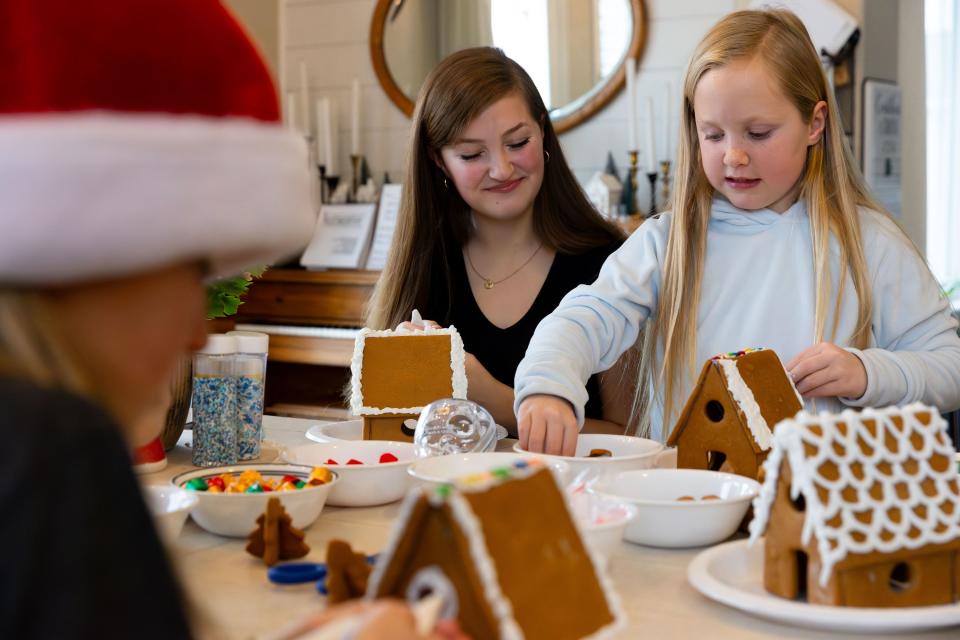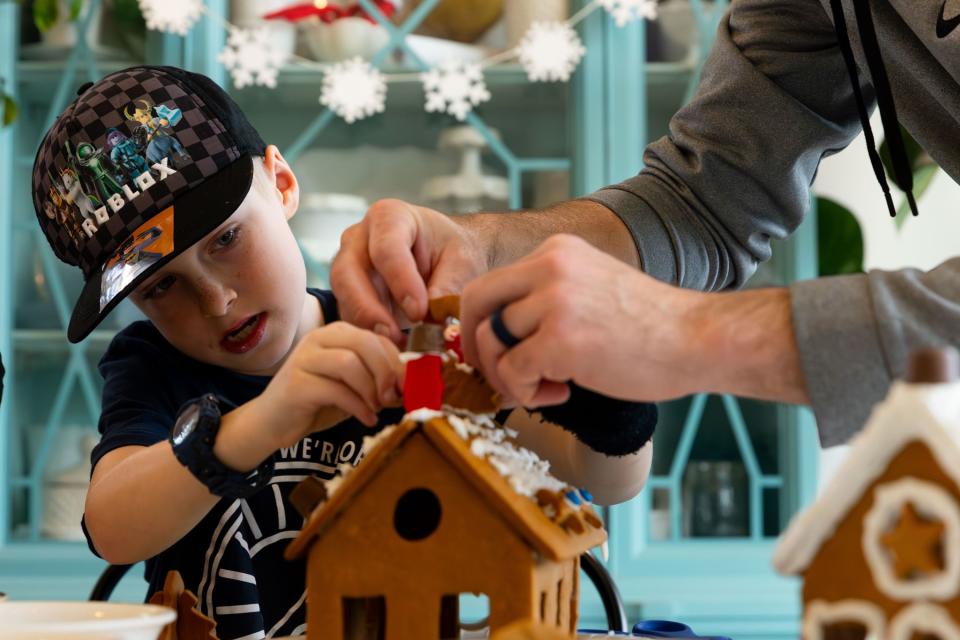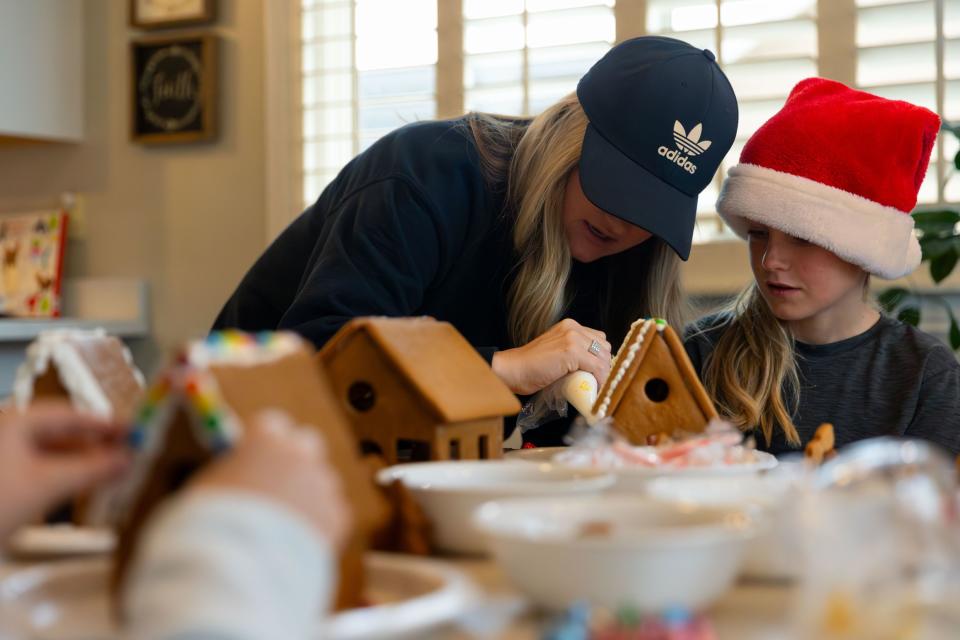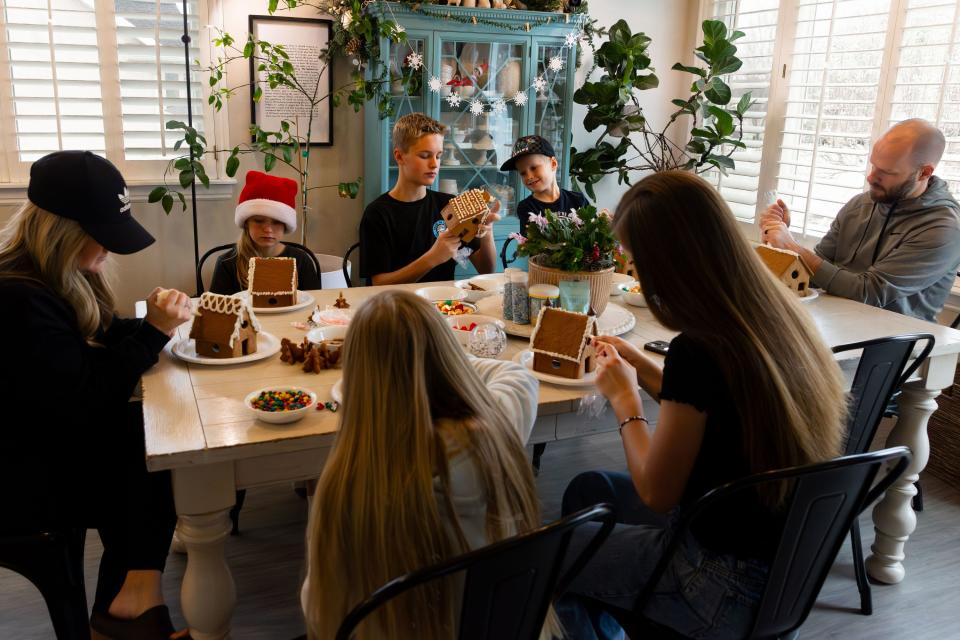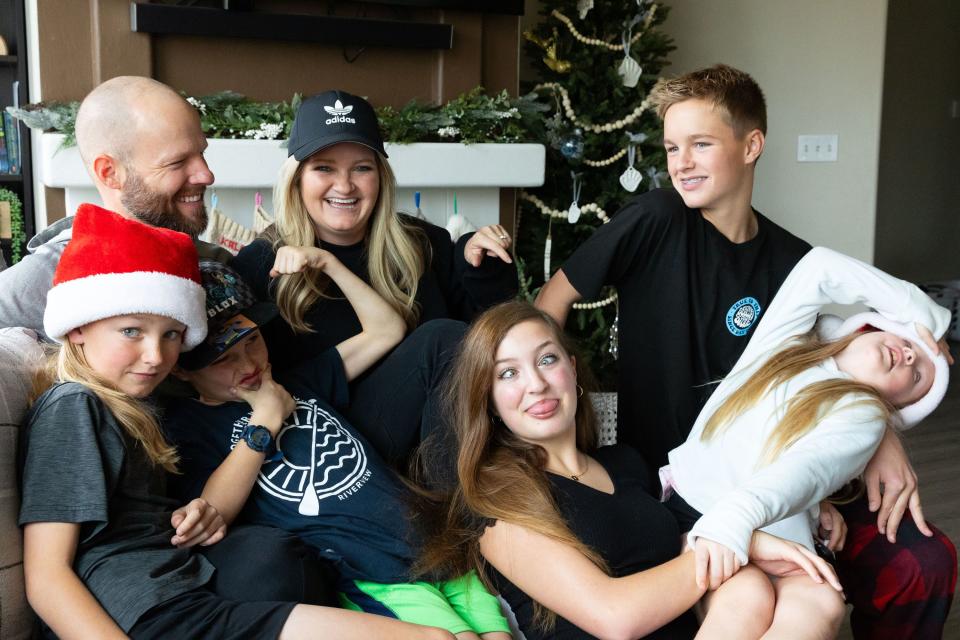Do Americans still love marriage?
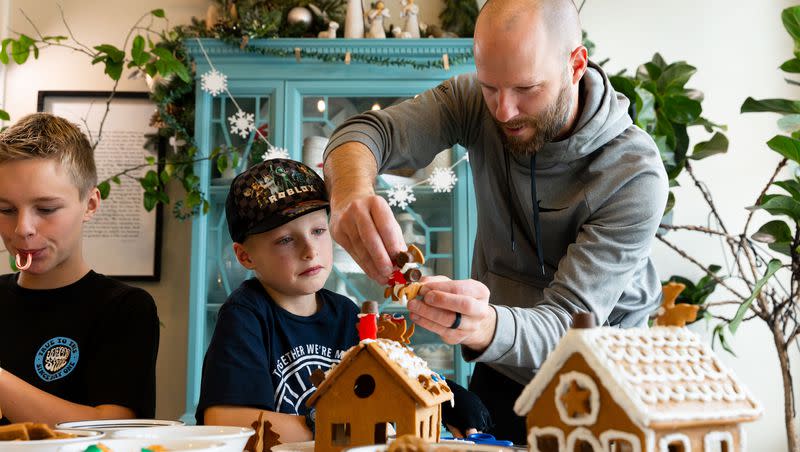
Editor’s note: This story is based on data from the 2023 American Family Survey.
The institution of marriage is increasingly a polarizing topic, though it remains popular and the majority of Americans aspire to it if they haven’t already wed.
But the popularity of “I dos” is slipping, according to the ninth annual American Family Survey, released Tuesday at the American Enterprise Institute in Washington, D.C. The survey is a nationally representative look at the actions, attitudes and opinions of U.S. adults on topics from what worries families to school politics, activities families share, work-life balance and family policy, among others.
“In our data, the marriage rate in the country is reportedly on the decline, while the parenting rate remains fairly constant,” according to the survey report by Christopher F. Karpowitz and Jeremy C. Pope, co-investigators and both political science professors at BYU.
Related
The survey finds views on marriage fall into three camps: A Republican, churchgoing group that’s largely enthusiastic about marriage; a Democratic group that is becoming more skeptical and is not particularly churchgoing, and “an odd collection of change in the middle.”
For several years, demographers and sociologists have reported that among those most apt to marry are people who are highly educated and have higher incomes. In the survey’s middle group, marriage support has increased among Blacks, Hispanics, independents, lower-income Americans and those with no college degree. But approval has actually slipped among people earning more than $120,000 a year and those with a college degree.
The report, which includes responses from 3,000 adults, notes that while marriage has declined in all groups, parenting rates have been level. It also finds that those who are married or are parents really value those identities.

YouGov conducted the survey Aug, 3-15 for Brigham Young University’s Center for the Study of Elections and Democracy, the Wheatley Institute at BYU and the Deseret News. It has an error margin of +/- 2.1 percentage points.
“Part of what we’re trying to follow over time is the extent to which people are actually getting married,” said Karpowitz, who notes that one limitation of a survey is it’s a snapshot in time of a sample of Americans. “One thing we’ve seen is that across all sorts of demographic groups, the percentage of people who say they are married right now is lower than in 2016.”
The survey reports:
Marriage is weakening as a support for children.
Democrats are losing faith in marriage.
Republicans and the “privileged” are investing less in programs to support marriage.
More and more younger adults are creating family outside of marriage and many are fleeing marriage altogether in the U.S., said Jennifer Randles, interim associate dean of the College of Social Sciences at California State University, Fresno, and author of “Proposing Prosperity: Marriage Education Policy and Inequality in America.”
“I think people see it as economically out of reach, but it goes beyond that,” she said. Many don’t see an economic need to be married the way they did in the past.
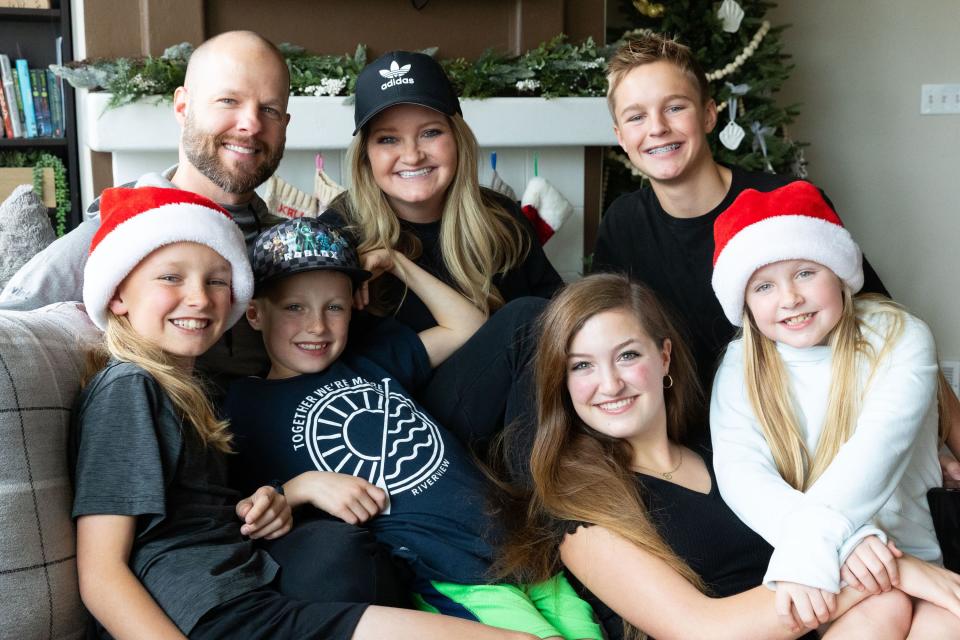
A stable, busy household
Busy is how Darin and Kali Priday of Saratoga Springs, Utah, describe their marriage and family life. They have five kids including 8-year-old twins, a 10-year-old and teens who are 13 and 15. They’ve been married 18 years and both describe their relationship with each other as the most important one they have.
With four kids playing competitive soccer and the oldest daughter Kylie involved in theater and serving as Junior Miss Saratoga Springs, breakfast is the best time to catch them all unless you attend one of their events — and there are a lot of them. Attending, by the way, is something they all do except when they have the occasional double booking. Then it’s divide and conquer.
‘I think our children require a lot of our time and energy right now, so as a result we sacrifice our relationship and our marriage to make sure we are giving our children the support they need. But still, it’s the highest priority for me,” Darin Priday said.
Related
In a polarized nation, can public schools work for all children?
Inflation, mental health, stress. What’s vexing American families?
Kali agrees. And now that their firstborn is old enough to babysit, she said she and Darin sometimes date. “It’s very refreshing to go on a date, to chat and reset. If there’s the opportunity, we take it. But also even just cuddling on the couch at night helps us both remember we are in this together and doing the best we can.”
The parental schedule, even absent all the chauffeuring, is also hectic. He works for Vivint as principal program manager, coordinating software and hardware programs. His wife has gone back to school part time; she’s in her second year studying fashion design at Salt Lake Community College.
Did we mention the kids are all in a Chinese-language immersion program?
The Pridays thrive on what might seem chaotic to others.
But none of what the family does would work if Kali and Darin Priday didn’t have a strong marriage, since it takes a united front, a shared sense of what matters and a lot of coordinating.
Among life’s lessons, relationships — their importance and also how to manage them — are a focal point, so the Pridays nurture them and cheer each other on.
Relationships are also central to what they say they’re trying to teach their children. “We’re trying to help them have a healthy relationship with us, with friends, with tech — making sure they are not having any bad, unhealthy relationships even with technology,” he said.

Marriage and family outcomes
When he was tabulating data from the survey, Pope said a particular “change on the left side of the political aisle” makes him nervous. “Democrats are retreating from marriage as an institution. I think that’s concerning.”
Concerning, he said, because research suggests marriage in general is good for people. “We all know someone who’s in a bad marriage, right? So I’m not going to claim that all marriages are good or that everyone should stay in them. There are times when you need to exit. But I do believe in more cases than not, marriage is a good thing and children are better off in marriage.”
Cynthia Osborne, professor of early childhood education and policy and the founder and executive director of the Prenatal-to-3 Policy Impact Center at Vanderbilt University, has spent years studying what society’s youngest members, ages 0-3, need to thrive. The key ingredient is really what all children need, she said: stability.
“Stability is the key to healthy development, whether in the earliest years of their lives or through their adolescence,” she said, noting that to understand their environment, children need others to meet their basic needs.
The first thing that boosts children’s stability is family structure, said Osborne, a family demographer by training. “We know when children have a stable family structure, it makes a big difference in health and well-being on numerous outcomes.” While two married parents aren’t the only family that can provide that, she said, “usually those are a more stable unit than unmarried partners or a single person who may cycle in and out of relationships.”
Stability in resources also matters — and Osborne emphasizes she’s not talking about great wealth or having every toy imaginable. “It means basic needs are met and that can be relied on.” Her examples are a child knowing where he will sleep and being able to predict meals will be available. If he’s sick, there’s a place to get help to get well.
That kind of stability isn’t true for millions of children who are food insecure, have unstable housing, lack access to healthcare and whose parents may be deciding between paying the rent, feeding the family or keeping the heat going, she said.
Kids also need a routine. And the more stable other aspects of a child’s life are, the more likely that is. Routine boosts a child’s sense of agency, autonomy and security, which aids their development. And it’s just as important for young children and adolescents.
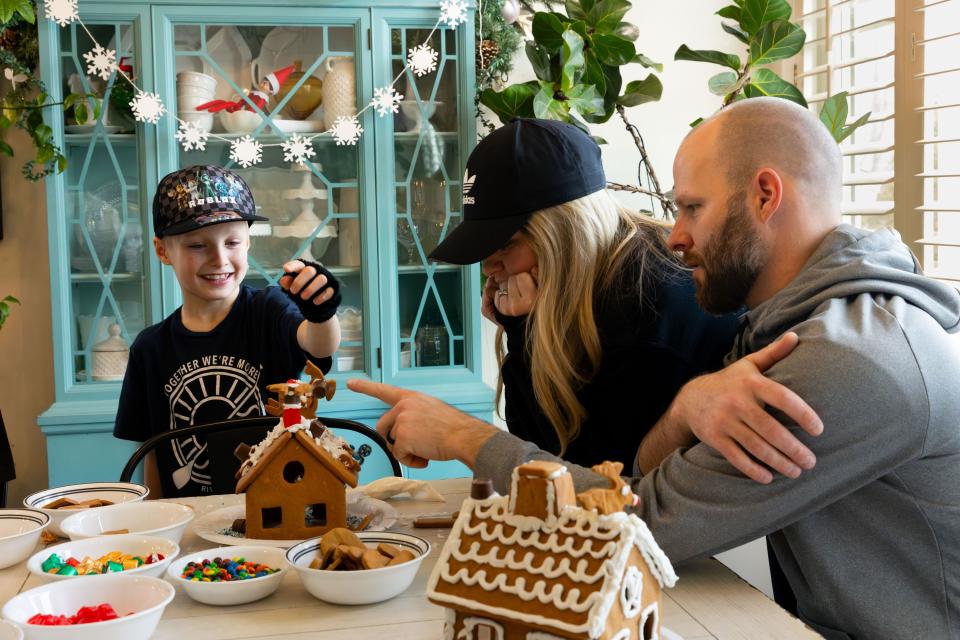
What are couples doing?
Psychologist Galena Rhoades, who studies young adult relationships and is a research professor at University of Denver, finds it interesting that society has become more accepting of alternatives to marriage and different kinds of relationships. “It hasn’t necessarily decreased people’s desire to marry or their affection when they are married.” She sees two different concepts: wanting to marry but not holding the value that other people need to aspire to be married.
Research indicates that people who married between 2010 and 2019 probably lived together first and that’s still true, she said. “People who live together do want to be married one day,” she said, but they may not be sure they are with the right person. Cohabitation is more likely to stick if the couple has solid plans to marry before they move in together. She and another University of Denver scholar, Scott Stanley, call it “deciding vs. sliding.”
“One thing I would say around romantic relationships is we’re seeing more acceptance of nontraditional unmarried relationships, whether it’s people who divorce but stay living together, who don’t get married, a single woman who has relationships, people who are single and won’t ever really be in relationships,” Rhoades said.
Cornerstone or capstone
Pope said young people are reluctant to get married until they’re able to fully establish their lives. “Everything suggests it’s easier to get married, then build a life together. I am worried they’re putting it off because they worry about what you have to do to be married. But once they do, it generally goes well.”
Fractures in what he and Karpowitz call the “coalition for marriage and the family” aren’t just on the left, either, he told the Deseret News. In the report, they wrote that Republicans who are pro-marriage may be pro-marriage symbolically. Per Pope, they’re not that interested in a specific, concrete set of policies that would make marriage easier for poor families or make it easier for people to contemplate marriage.
Some are, Pope noted, “but the median Republican is not pro-family in the sense of willing to commit resources or funds to it.” The survey found that when “asked whether or not to pass a bill in Congress to provide additional assistance for families, 55% of Democrats believed that was ‘very important,’ while only 19% of Republicans agreed.”
Karpowitz said the institution of marriage has liberalized in ways people on the left have wanted. Some of the barriers to extracting oneself legally from a poor marriage have decreased. Same-sex couples can marry. Even so, those on the left are less keen on marriage.
But 45% of those surveyed who say they’ve been married or in a relationship for at least two years say the bond is stronger than it was two years ago.

This survey also finds a related pattern that has been consistent over the course of the survey: A solid share believe their personal marriage is doing fine, but that marriage overall is weaker. A similar pattern is seen when people are asked about their own family and families in general.
One reason for the rise of different family structures, Rhoades said, is because parents of those in their 20s and 30s who are making the decisions are becoming more accepting. Previous generations of parents were often much less so.
Like Osborne, she said research shows kids’ need haven’t changed: two parents involved in their lives. “Marriage is the easiest way for kids to get that. It doesn’t mean other arrangements can’t make that happen, but marriage is the easiest way to have two parents focused on them, involved and supportive.”
It’s definitely not good for kids when parents can’t create a cooperative relationship, in marriage or in divorce, Randles said. “If they can do that cooperative coparenting and be committed to taking care of them, kids can do quite well — sometimes better than if parents stayed together and had a conflict.”
Isabel Sawhill has written and co-written a number of books, including most recently “A New Contract with the Middle Class.” An economist, she’s a senior fellow in economic studies at the Brookings Institution and was an adviser on this survey.
She finds the ideological debate about marriage interesting, she said, noting that recently, “The Two Parent Privilege: How Americans Stopped Getting Married and Started Falling Behind,” by Melissa Kearney prompted a backlash from progressive younger people, many of them academics.
“On the other hand, I think she has restarted a sensible conversation about why having two committed parents is better for children than only having one,” Sawhill said.
Sawhill notes two parents have more time and can have more money and emotional energy for raising kids. “It's a lot easier,” she said. “None of that disrespects the job that many single parents are doing.”
Sawhill said her hope is growing that the “married, two-parent family isn’t dead.”
As for the survey results, she notes that findings may in part reflect that the survey’s pool is getting younger. “As you get generational turnover in any survey, you find that the views of younger generations begin to dominate more with respect to attitudinal values. If you’re brought up in a world in which the norm of marriage is weakened or somewhat suspect, that is going to trickle down to people at every education level.”
